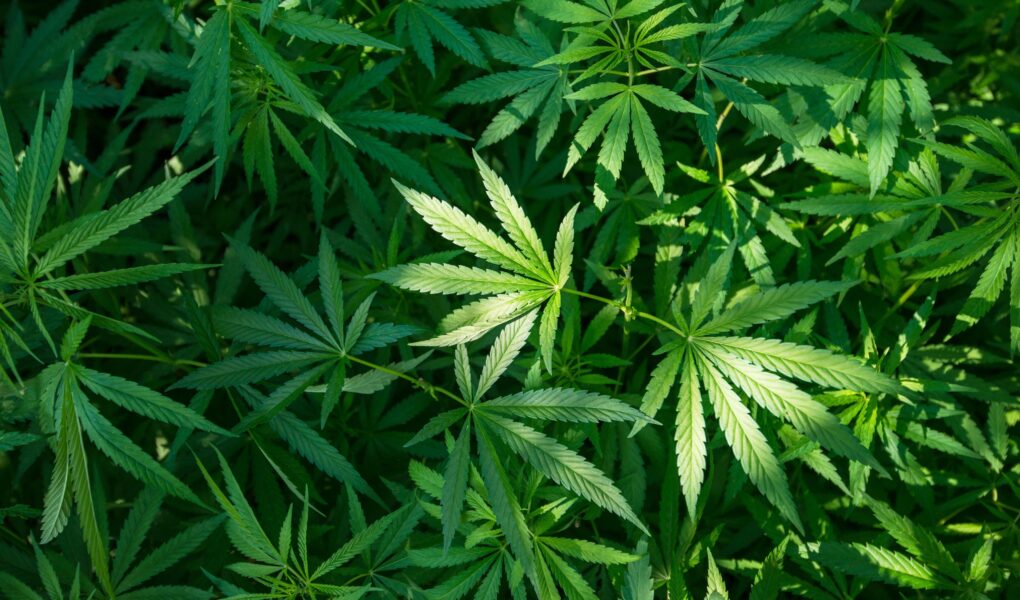As the sun sets on centuries of stigma and prohibition, a new dawn emerges for cannabis: one that recognizes its potential not only as a recreational indulgence but as a formidable ally in the realm of medicine. From ancient herbal traditions to cutting-edge clinical trials, marijuana has traversed a complex landscape of cultural perceptions and scientific inquiry. Today, it stands at the intersection of healing and innovation, sparking conversations that challenge conventional beliefs about health and wellness. In this article, we embark on a journey through the multifaceted world of marijuana as medicine, exploring its therapeutic benefits, the intricacies of its active compounds, and the evolving legal and societal frameworks that shape its use. Join us as we delve into the promising promise of this controversial plant, illuminating the path toward understanding its role in modern healthcare.
Table of Contents
- Exploring the Therapeutic Benefits of Cannabis in Modern Medicine
- Understanding the Science Behind Cannabinoids and Their Effects
- Navigating Legal and Ethical Considerations in Medical Marijuana Use
- Practical Guidelines for Patients Considering Cannabis Therapy
- Q&A
- To Wrap It Up
Exploring the Therapeutic Benefits of Cannabis in Modern Medicine
Cannabis, once relegated to the shadows of society, is now emerging as a potent therapeutic agent in modern medicine. Its diverse compounds, particularly cannabinoids such as CBD and THC, have shown promise in treating a variety of ailments. Patients are increasingly turning to cannabis to manage chronic pain, alleviate nausea from chemotherapy, and reduce anxiety. Notably, the endocannabinoid system, a complex network within the body, plays a crucial role in maintaining homeostasis, suggesting that cannabis may interact beneficially with our physiology.
The therapeutic applications of cannabis extend beyond its psychoactive effects, leading to a wide range of potential benefits. Research has revealed its efficacy in managing conditions such as:
- Multiple Sclerosis: Reduces muscle spasms and improves mobility.
- Epilepsy: Certain cannabis oils have been effective in controlling seizures.
- PTSD: Helps in reducing anxiety and improving sleep quality.
- Appetite Stimulation: Beneficial for individuals undergoing treatments like chemotherapy.
| Condition | Proven Benefits |
|---|---|
| Pain Management | Reduces inflammation and provides analgesic effects. |
| Sleep Disorders | Improves sleep quality and duration. |
| Depression | May help alleviate symptoms without severe side effects. |
| Neuropathic Pain | Effective in reducing pain associated with nerve damage. |
Understanding the Science Behind Cannabinoids and Their Effects
The human body has an intricate system known as the endocannabinoid system (ECS), which plays a crucial role in maintaining homeostasis. This system is comprised of data relayed through receptors, primarily CB1 and CB2. These receptors are found throughout the body, including the brain, immune system, and various organs. Cannabinoids like THC and CBD interact with these receptors, producing a range of effects that can aid in various medical conditions. Notably, THC mimics the action of endocannabinoids, binding primarily to the CB1 receptors and impacting mood, appetite, and pain perception, while CBD does not produce a high and is known for its anti-inflammatory and anxiolytic properties.
Research indicates that cannabinoids can offer a multitude of therapeutic benefits. Here are some documented effects:
- Pain Relief: Cannabinoids can modulate pain pathways, offering relief for conditions like arthritis and neuropathic pain.
- Anti-inflammatory: CBD has shown significant promise in reducing inflammation, making it beneficial for chronic inflammatory diseases.
- Neuroprotective: Cannabinoids may protect against neurodegeneration in diseases such as Alzheimer’s and multiple sclerosis.
- Anti-anxiety: Numerous studies suggest that CBD can help reduce anxiety without the psychoactive effects of THC.
- Improved Sleep: Cannabinoids can assist in regulating sleep patterns, providing relief from insomnia.
| Condition | Primary Cannabinoid | Key Benefit |
|---|---|---|
| Chronic Pain | THC | Pain modulation |
| Epilepsy | CBD | Seizure reduction |
| Anxiety Disorders | CBD | Anxiolytic properties |
| Inflammatory Bowel Disease | CBD | Anti-inflammatory |
| Multiple Sclerosis | THC | Muscle spasticity relief |
Navigating Legal and Ethical Considerations in Medical Marijuana Use
As the medical landscape evolves, so too does the legal framework surrounding the use of marijuana for medicinal purposes. Different jurisdictions have established various laws and regulations aimed at governing its use, which can lead to confusion for patients and healthcare providers alike. Understanding these legal nuances is critical, as it involves not just compliance but also safeguarding patient rights. Key factors to consider include:
- State-Specific Laws: Each state has its own set of regulations regarding the prescription and consumption of medicinal marijuana.
- Eligibility Criteria: Conditions that qualify for medical marijuana use vary significantly from one location to another.
- Licensing and Certification: Medical professionals prescribing marijuana often need special licenses.
In addition to legal considerations, ethical dilemmas frequently arise when discussing medical marijuana. Healthcare providers must navigate the balance between alleviating suffering and adhering to established medical guidelines. Some vital ethical considerations include:
- Informed Consent: Patients must be fully informed about the potential risks and benefits before commencing treatment.
- Equity and Access: Ensuring that all patients have equal access to this form of treatment is paramount.
- Ongoing Education: Professionals need continuous learning about evolving research and legislative changes to provide the best care.
Practical Guidelines for Patients Considering Cannabis Therapy
For patients exploring cannabis therapy, it is crucial to start with a thorough understanding of their condition and treatment options. Consultation with a healthcare professional experienced in cannabis use can provide valuable insights tailored to individual health needs. It’s important to discuss your medical history, current medications, and the specific symptoms you aim to alleviate. Remember, effective communication with your provider fosters a better therapeutic outcome. Here are some key considerations to keep in mind:
- Research the potential benefits and risks associated with cannabis use.
- Understand the different strains and their respective effects.
- Start with small doses to gauge your body’s response.
- Maintain a journal to track your symptoms and treatment progress.
Moreover, it might be beneficial to familiarize yourself with legal restrictions regarding cannabis in your state or country. As regulations vary widely, knowing the laws can help avoid complications and ensure safe access to cannabis products. If you’re considering cannabis for pain management, anxiety, or other ailments, you might find it helpful to explore various methods of consumption, including oils, edibles, and vaporizers. The following table highlights common forms of cannabis and their typical effects:
| Form | Typical Effects |
|---|---|
| Oils | Fast-acting, precise dosing |
| Edibles | Long-lasting effects, delayed onset |
| Vaporizers | Quick relief, less harmful than smoking |
Q&A
Q&A: Exploring Marijuana as Medicine
Q: What is medical marijuana?
A: Medical marijuana refers to the use of the cannabis plant or its extracts to treat certain medical conditions or alleviate symptoms. It is often prescribed by healthcare professionals and can come in various forms including oils, capsules, edibles, and vaporizers.
Q: What conditions can medical marijuana help treat?
A: Medical marijuana has shown potential benefits for a variety of conditions, including chronic pain, epilepsy, multiple sclerosis, and nausea from chemotherapy. It is also used to stimulate appetite in patients with HIV/AIDS and to ease anxiety and PTSD symptoms.
Q: How does marijuana work in the body?
A: The cannabis plant contains compounds known as cannabinoids, the most well-known being THC (tetrahydrocannabinol) and CBD (cannabidiol). These cannabinoids interact with the body’s endocannabinoid system, which plays a role in regulating pain, mood, appetite, and other physiological processes.
Q: Is there scientific evidence supporting the use of marijuana as medicine?
A: While there is a growing body of research supporting the therapeutic use of marijuana, the level of evidence varies by condition. Some studies have demonstrated positive outcomes, while others call for more rigorous research. The FDA has approved certain cannabis-derived medications, indicating a recognition of its medicinal properties.
Q: Are there any risks associated with medical marijuana?
A: Yes, like any medication, medical marijuana comes with potential risks. These may include impairment of cognitive function, addiction, and negative interactions with other medications. Long-term effects are still being studied, emphasizing the importance of consulting healthcare providers before starting treatment.
Q: How is medical marijuana prescribed?
A: In many jurisdictions, obtaining medical marijuana requires a recommendation from a licensed healthcare professional who has conducted an assessment of the patient’s condition. Patients may need to go through specific registration processes to legally access medical marijuana.
Q: Can anyone use medical marijuana?
A: Not everyone qualifies for medical marijuana use. Eligibility typically depends on the specific laws of the state or country, which outline qualifying conditions. It is important for individuals to consult with their healthcare providers and abide by local regulations.
Q: What is the difference between medical and recreational marijuana?
A: The primary difference lies in the intent of use. Medical marijuana is used to alleviate specific health issues and is often prescribed in controlled doses, while recreational marijuana is used for enjoyment and is generally not subject to the same regulations or guidelines.
Q: What are some common delivery methods for medical marijuana?
A: Medical marijuana can be consumed in various forms. Common methods include smoking or vaporizing the dried flower, consuming edibles (like gummies or cookies), using tinctures, and applying topical creams. Each method has its own onset time and duration of effects, influencing patient choice based on individual needs.
Q: What’s the future of marijuana as medicine?
A: The future of marijuana as a medicinal agent looks promising, as ongoing research continues to uncover its benefits and risks. With shifting attitudes toward cannabis and increasing legalization, more studies are expected, potentially leading to broader acceptance and understanding within the medical community.
Q: How should patients go about considering medical marijuana?
A: Patients should start by discussing their symptoms and treatment options with a qualified healthcare provider. It’s essential to weigh the potential benefits against risks and to consider all possible treatment avenues before making a decision regarding medical marijuana.
To Wrap It Up
As we draw the curtains on our exploration of marijuana as medicine, it becomes clear that this ancient herb, once shrouded in stigma and controversy, is steadily reclaiming its place in the realm of healing. From chronic pain relief to the management of anxiety and its potential to assist in combating more serious ailments, the therapeutic benefits of cannabis are backed by a growing body of research and anecdotal evidence.
Yet, it is essential to approach this powerful plant with an open mind and a discerning eye. The journey towards understanding marijuana’s full medicinal potential is ongoing, as scientists and medical professionals work tirelessly to unravel its complexities. As legislation evolves and societal attitudes shift, patients and practitioners alike stand at the forefront of a new era in healthcare, one that invites innovative treatments and personalized therapies.
Whether you view marijuana as a last resort or a first-line therapy, the conversation surrounding its use in medicine will undoubtedly continue to evolve. As we navigate this nuanced landscape, let us remain curious, compassionate, and committed to uncovering the truth about cannabis, fostering a future where it can be safely and effectively integrated into the tapestry of modern medicine. The path ahead may be winding, but the potential for healing shines brighter than ever, beckoning us to explore its depths with courage and care.



